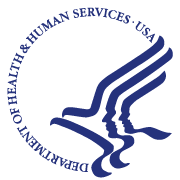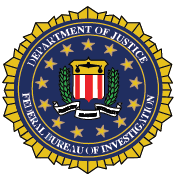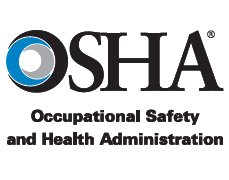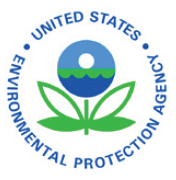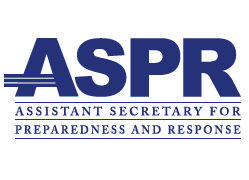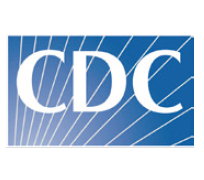Fourth Generation Agents: Safety Awareness for First On-Scene Responders
(Information as of January 18, 2019)
Introduction/Overview
- This information is part of ongoing preparedness for all hazards and is intended to help you protect yourself if an incident ever occurs involving a fourth generation agent (FGA, also known as A-series or Novichok nerve agents), such as the one used in the United Kingdom in 2018. No illicit use or manufacture of an FGA or other nerve agent is known to have occurred in the United States, and there is no known threat of any nerve agent use in the United States.
- If an incident occurs involving an FGA, first on-scene responders (law enforcement, fire, and emergency medical services personnel) initially may be unaware that an FGA is present. Conduct an appropriate initial scene assessment in accordance with standard protocols. Implement protocols for a hazardous materials response if you suspect any potential nerve agent incident, and ensure the local FBI Weapons of Mass Destruction (WMD) Coordinator is notified immediately. The FBI will investigate the threat or presence of any nerve agent, including FGAs, as a violation of federal law.
- The National Guard WMD-Civil Support Teams (WMD-CSTs) possess unique training and have specialized U.S. government fielded equipment to perform field identification to assist local and state responders. Your state Emergency Operations Center can contact the WMD-CSTs if you suspect a nerve agent release.
Agent Identification
- FGA poisoning causes symptoms similar to those from other nerve agents. FGAs are at least as toxic as VX.
- FGAs are low volatility nerve agents (highly persistent; pose a significant cross-contamination hazard; do not easily evaporate; unlikely to present vapor hazard) and are most likely to be encountered as a liquid. FGAs are more persistent than other nerve agents and are at least as toxic as VX. Early recognition may be extremely challenging due to the possibility of delayed onset of symptoms for up to 3 days post exposure.
- The most likely route of exposure is skin contact, but FGAs can also be absorbed into the body by mucous membrane contact (eyes, nose, mouth), inhalation, or ingestion. FGAs may cause rapid or delayed onset of symptoms, depending on the specific agent, dose, and route of exposure.
- Patients may demonstrate some combination of the following symptoms:
- SLUDGE – Salivation (drooling), Lacrimation (tearing of the eyes), Urination, Defecation, Gastrointestinal upset, Emesis (vomiting)
- DUMBBELS – Defecation, Urination, Miosis (pinpoint pupils)/Muscle weakness, Bronchospasm/Bronchorrhea (excessive bronchial secretions), Bradycardia (decreased heart rate), Emesis, Lacrimation, Salivation/Sweating
- Patient symptoms may be the only initial FGA indication. Detecting FGAs is more challenging than detecting other chemical agents and hazardous materials response teams have a limited fielded capability within hazardous materials response teams to detect, characterize, and identify FGAs. Failure to detect does not mean that FGAs are not present. U.S. government specialized assets may be the only way to determine if FGAs are present.
Rescuer Protection
- FGAs are highly potent and contact with small amounts (e.g., even drops) can cause serious health effects. Responders should take measures to avoid any unprotected contact with the agent, suspected contaminated surfaces, or potentially contaminated people. Because of the properties of FGAs, responders should avoid any potential for cross-contamination.
- If you suspect the presence of an FGA based on your scene assessment, secure the area, implement protocols for a hazardous materials response, and notify hospital emergency departments.
- Select PPE based on your department or agency’s standard operating procedures, your job task, and potential for exposure to hazards. See the FGA Reference Guide for additional information.
- It is possible responders may perform lifesaving actions before recognizing that a hazard, including an FGA, is present. Responders performing lifesaving actions should wear appropriate Personal Protective Equipment (PPE) and minimize the number of personnel entering the area. Wear eye protection and double layer nitrile gloves. Change your gloves as needed using proper donning and doffing procedures.
- Avoid any unprotected contact with agent, suspected contaminated surfaces, or potentially contaminated people.
- Do not touch your eyes, mouth, nose or skin after touching any potentially contaminated surface. Avoid any potential for cross-contamination.
- Report any potential exposure and be medically evaluated immediately per your department or agency’s procedures if you are involved in an incident that includes the presence of an FGA. Symptoms may occur up to 3 days post exposure.
Decontamination
- Conduct decontamination as soon as possible after a known or suspected exposure to an FGA, with particular emphasis on removing any liquid agent from the skin.
- Remove potentially contaminated clothing and equipment using proper doffing procedures, place items in a plastic bag, and secure it as evidence at the scene.
- Avoid using hand sanitizer or other products containing alcohol, as they may enhance absorption of agent and spread it over a larger area of skin. Do not use bleach to decontaminate skin.
- Use a paper towel or other dry cloth to blot (do not wipe) any visible contamination from the skin.
- Wash affected area with copious amounts of soap and water. Do not delay decontamination if soap is not available.
- Avoid contact with decontamination runoff (wash water). FGAs are highly water soluble; however, they are not readily degraded by water.
Please visit https://chemm.hhs.gov/nerveagents/FGA.htm for the FGA Reference Guide and other FGA-related resources.

